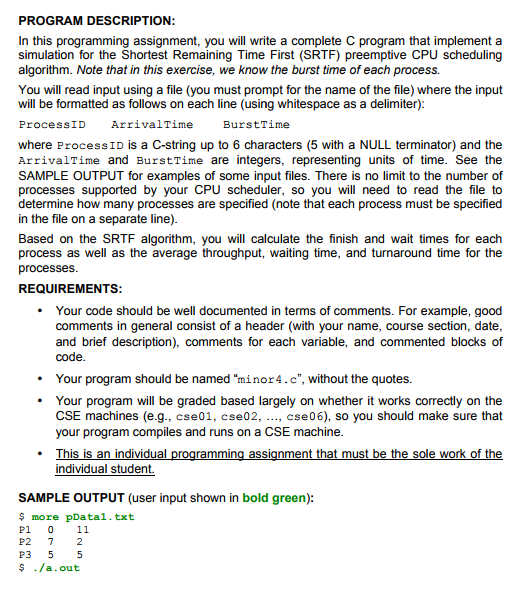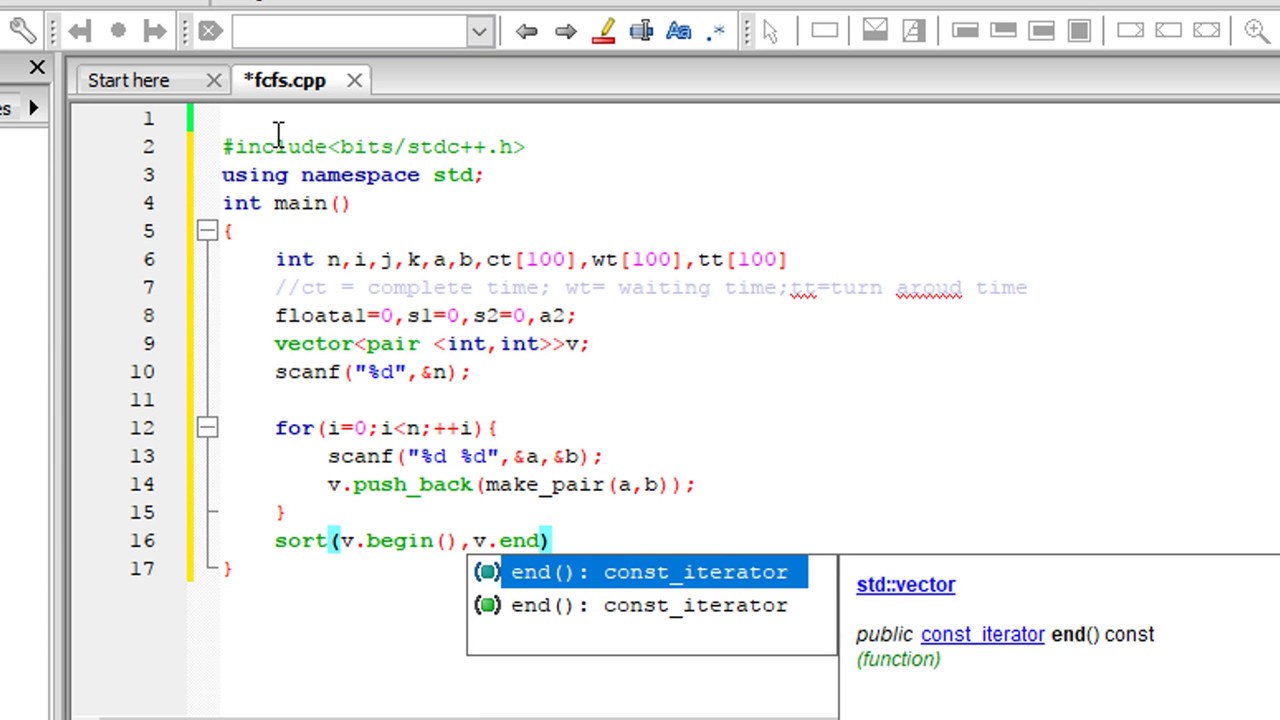

The queue structure in ready queue is of First In First Out (FIFO) type. In a multi-user and a time-sharing system, response time is one of the most important objective to be accomplished. Start Time(ST), Completion Time(CT), Turnaround Time(TAT), Waiting Time(WT) and Response Time(RT) for each process. Round Robin Scheduling Program in C++ Process scheduling is an important component for process management.Preemptive Scheduling Algorithms are those which are based on the priority of the processes. These scheduling algorithms are either preemptive or non-preemptive. If all process arrives at the same time, this can be set to 0 for all processes. Definition: A Scheduling Algorithm is the algorithm which tells us how much CPU time we can allocate to the processes. If you want to understand more about SRTF algorithm with example, watch the below video. SRTF - A Preemptive Algorithm: This Program works for same as well as different. SRTF is basically preemtive version of SJF. System-Programming-OS-Programs / SRTFCPUSchedulingC.c Go to file Go to file T.Shortest Job first has the advantage of having minimum average waiting time among all scheduling algorithms. A process that is running on the CPU can be removed if a new process arrives in ready queue with lower burst time than current process. Shortest job first (SJF) or shortest job next, is a scheduling policy that selects the waiting process with the smallest execution time to execute next. The processes gets serviced by the CPU in order of their burst time in ascending order.

Scope This article talks about SRTF scheduling in detail. All processes in a queue are sorted in ascending order on their remaining run time.

Similarly, the turnaround time for P3 will be 17 seconds because the waiting time of P3 is 2+5 = 7 seconds and the burst time of P3 is 10 seconds. The job having less burst time will get scheduled. So, the turnaround time will be 2+5 = 7 seconds. Shortest Job First (SJF) is a CPU Scheduling algorithm in which allocation of CPU is based on burst time. After 2 seconds, the CPU will be given to P2 and P2 will execute its task. The turnaround time of P2 is 7 seconds because the process P2 have to wait for 2 seconds for the execution of P1 and hence the waiting time of P2 will be 2 seconds.

Then the turnaround time of P1 is 2 seconds because when it comes at 0th second, then the CPU is allocated to it and so the waiting time of P1 is 0 sec and the turnaround time will be the Burst time only i.e.
#C program for srtf cpu scheduling algorithm program simulator#
You will write a C program to implement a simulator with. Turnaround time = Exit time - Arrival timeįor example, if we take the First Come First Serve scheduling algorithm, and the order of arrival of processes is P1, P2, P3 and each process is taking 2, 5, 10 seconds. I have the following program that I wrote as an exercise for learning C. This programming project is to simulate a few CPU scheduling policies discussed in the class. Turnaround time = Burst time + Waiting time Turnaround time is the total amount of time spent by the process from coming in the ready state for the first time to its completion. In the above example, the response time of the process P2 is 2 ms because after 2 ms, the CPU is allocated to P2 and the waiting time of the process P2 is 4 ms i.e turnaround time - burst time (10 - 6 = 4 ms).


 0 kommentar(er)
0 kommentar(er)
